Cardio machines for beginners: key gym equipment decoded
Got a gym membership but scared of the equipment? Here’s how to get started with and make the most of key cardio machines...
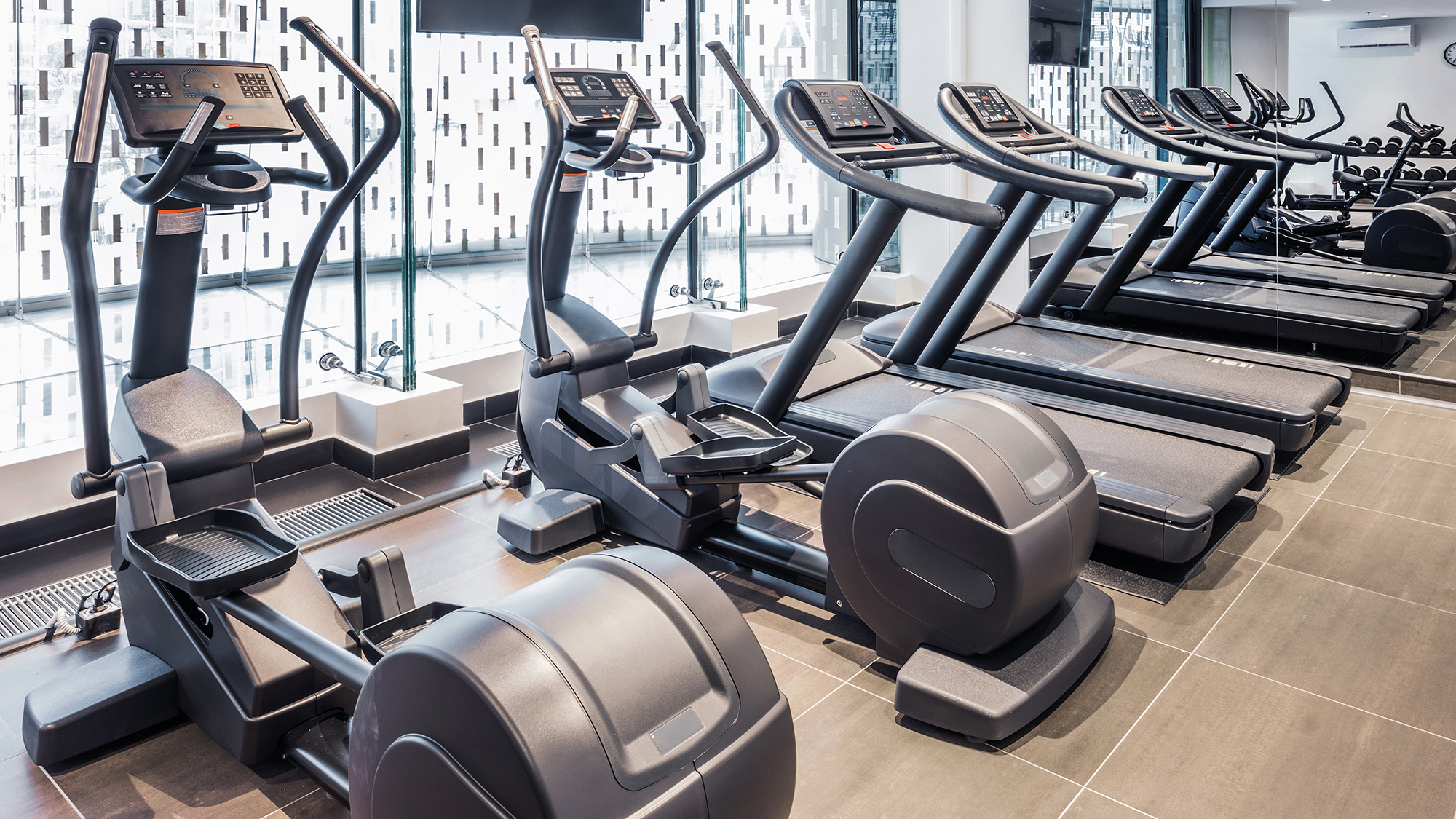
We've all been there: walking into a gym to be confronted with a vast array of cardio machines - and not knowing where to start.
If that sounds like you, then you've come to the right place, as in this article we'll give a simple overview to some of the best exercise machines you'll typically find in the gym - and provide our top tips on how to get started with them.
The first thing to note is that cardio machines are different to weight machines of free weights. Whereas the latter are designed to build strength and conditioning in the body, cardio equipment provides a cardiovascular workout - that is, one that increases the heart rate and respiration.
The key cardio machines we'll cover in this article are the elliptical machine, the rowing machine, the treadmill and the exercise bike. Ready to go (and sweat)? Let's dive in!
The elliptical machine
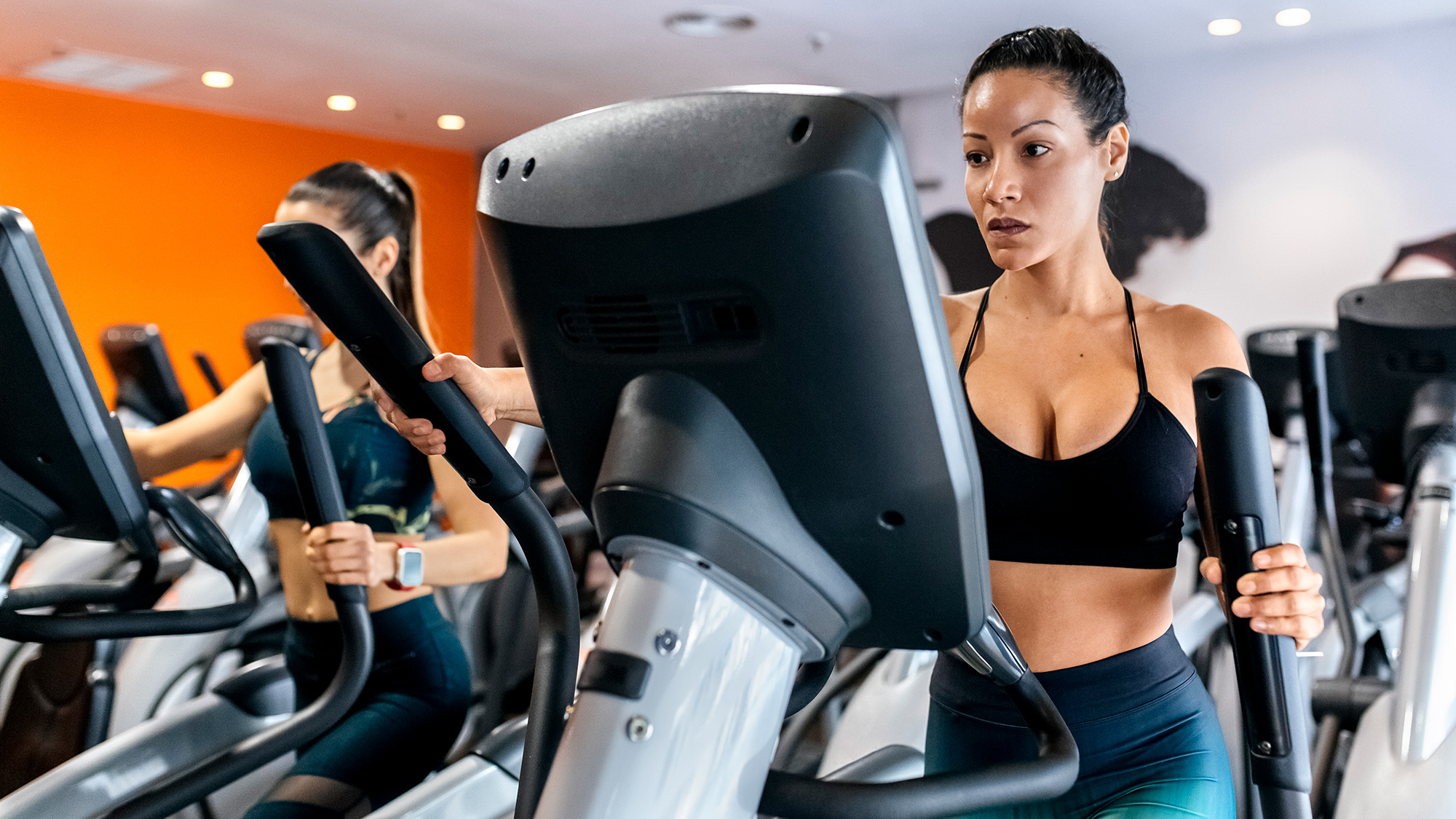
If you're looking for a low-impact cardio workout, then the elliptical machine - or cross trainer, as its also know - is your friend. This piece of exercise equipment is easy on the joints, making it a great option for those with knee, hip or back issues.
The elliptical is always one of the most popular cardio machines in the gym, which is why they're also one of the most popular pieces of home exercise equipment. If you'd like your own shiny cross trainer to jump on at home, check out our pick of the best elliptical machines.
One final top tip for female users is to always wear the best sports bra you can find whilst using the elliptical. Although it doesn’t have the same impact as running, the cross trainer involves a lot of up and down movements and you’ll be thankful for the support!
Get the Fit&Well Newsletter
Start your week with achievable workout ideas, health tips and wellbeing advice in your inbox.
Go feet first
As a beginner, focus on using the foot pedals and let your hands grasp the stationary handles (the ones that don't move). Place your feet on the footplates and keep them in position throughout – don’t allow them to move around or you may lose your balance. Allow the heel to rise on each stride for a comfortable, natural movement. When you’re used to the rhythm and feel more confident, you can progress to using the dynamic handles to give your upper body a workout.
Use it to warm up
The cross trainer is the ideal warm-up machine because it works both your upper and lower body. If you’re using it before moving onto weights, for example, try five minutes at a moderate intensity, or until you feel thoroughly warmed up.
Mix it up
Combining different speeds and resistance will make your workout more interesting and challenging. Or use interval training principles to really rev things up – work as hard as you can for 30 seconds, then slow down for the next minute before speeding up again. Repeat three times, or until you’re tired.
Go backwards
Once you’ve mastered going forwards, use the cross trainer to go backwards, too – this engages the muscles in your thighs and hips, working out a different part of your body.
Lead with your arms
Once you've progressed to using the dynamic handles, try putting the majority of the effort into working with your arms, pushing hard and letting your legs take a supporting role. This will also work your chest, back and shoulders.
The rowing machine
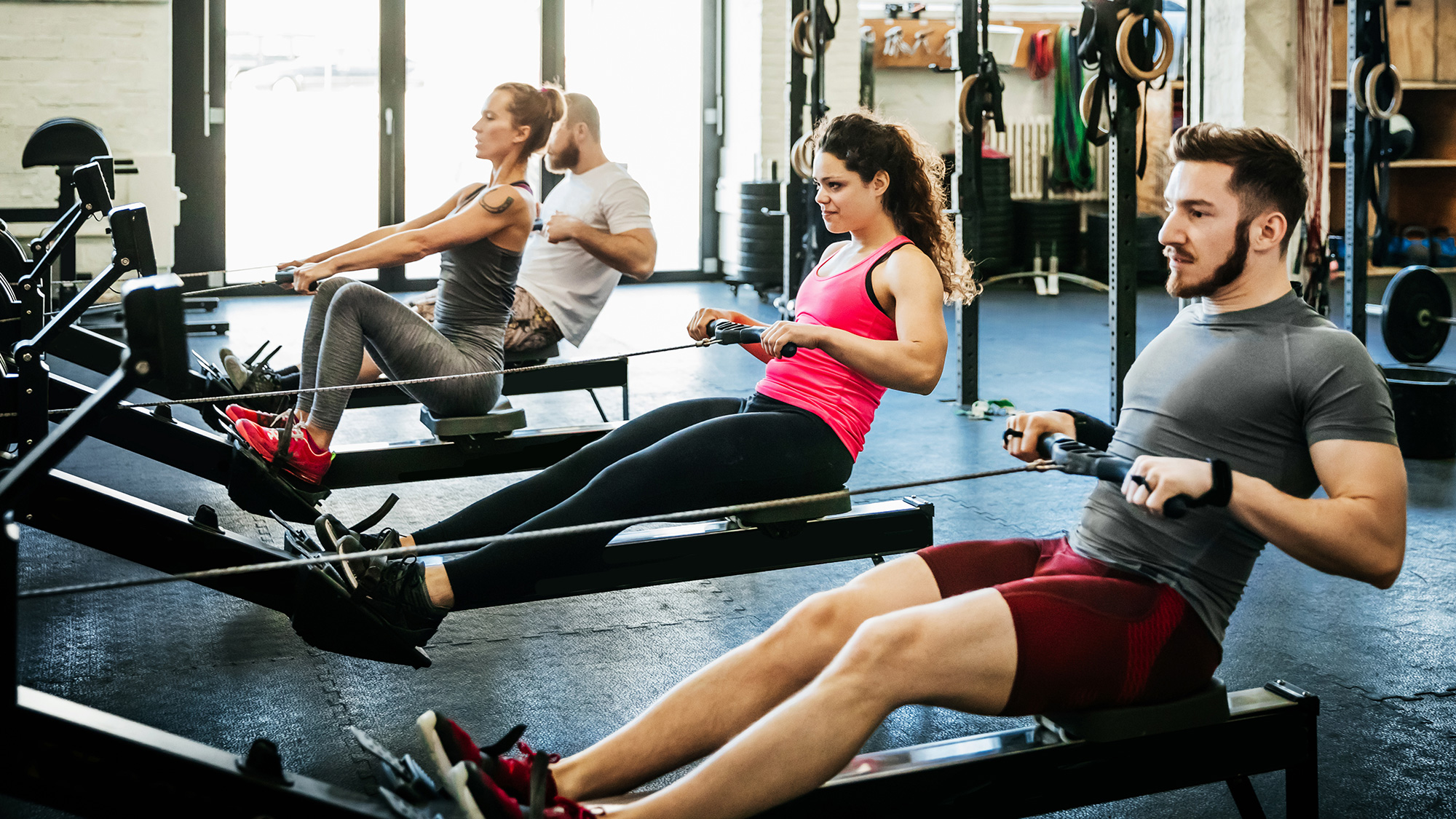
Rowing machines aren't just for those who are regular on the river - they're also one of the best exercise machines for weight loss, thanks to the sweat-busting workout they offer.
Whether you hop on in the gym or use on of the best rowing machines for home, benefits of the rowing machine include high fat burn, as well as being a full-body workout that's - like the elliptical - also low impact.
One key bit of advice is to avoid loose fitting clothing when using the rower, as it can get caught under the seat - which isn't only dangerous, but also embarrassing in a gym full of other people!
Read on to discover more about getting started on this piece of cardio machinery, and also check out our full guide on how to use a rowing machine.
Start right
Adjust the footplate so that the strapping goes across the widest part of your foot. Begin on the lowest resistance setting to help you get used to the movement.
Check your posture
Sit upright, looking ahead, with shoulders low to avoid injuring your back. Keep arms by your sides with the elbows tucked in for the most efficient stroke. And when you pull the handle into your body, aim for your mid-abdominals rather than your chest.
Work those legs
Although you may think it's one of the best arm workouts, the bulk of the power actually comes from your lower body - so you should be pushing with your legs. Your arms and back only need to help towards the end of the pulling movement.
Stay hydrated
This tip really applies to all cardio machines, but the rower a particularly tough one. You’ll break a sweat, so keep water to hand so you can drink without having to interrupt your rowing flow. We've picked the best water bottles for the gym for you to choose from.
Try racing
Many rowing machines have software that allows you to race against an imaginary opponent, which is motivating and makes it more fun. The standard distance for indoor rowing competitions is 2,000m, so you could try to make that your ultimate goal!
The treadmill

The treadmill is probably the piece of gym cardio equipment that most people are familiar with. Part of its beauty lies in its simplicity - you can simply get on and start running (provided you know how to use a treadmill properly, of course).
However, there's so much more that these cardio machines have to offer. The best treadmills include settings for incline running (great for working your posterior chain muscles) and interval training, and apps such as Strava also allow for friendly (or not so friendly!) competition with others.
One thing we recommend anyone using a treadmill does is clip the emergency pull cord to your clothing. This will cut the power if you get too close to the back of the treadmill, helping you avoid a tumble (and possibly a comedy appearance on YouTube!)
Get your gait right
For efficient running and less jarring of your joints, land on your heels and go forward onto your toes, rather than putting all the weight on the front of your feet. The right shoes will help. Ideally, visit a running shop, where staff can perform a gait analysis before recommending the most suitable footwear. For example, lots of people overpronate while running. This means the foot rolls inwards and it can put extra pressure on your knee and hip joints, and requires shoes specifically designed to support this type of gait. You'll find more info and a variety of top options in our guides to the best running shoes for women and the best running shoes for men.
Let go of the handrails
If you’re new to the treadmill, it’s better to start slowly, letting your arms swing, rather than clinging on because you’re trying to go too fast. If you hold the rails, your body isn’t working as hard as it could be. Walk, building up pace, until you feel confident enough to run.
Use the incline
Upping the incline on a treadmill will make your workout more realistic, reflecting outdoor conditions. Use the inbuilt software to tackle a pre-set hills program, or simply run at a set gradient for a period of time. Many of the points in our article on the benefits of incline walking refer to the treadmill, and also apply to running - so check it out for more information.
Try intervals
Interval training - performing bursts of high energy exercise followed by periods of active recovery - will make your workout more effective and burn more calories. For example, try 20 seconds of sprints, followed by 40 seconds of walking.
Slow to stop
When you come to finish your treadmill session, don't just hit the stop button and jump off. Instead, take three to five minutes to slow to a jog and then a walk before stopping. This will allow your blood pressure and heart rate to return to resting levels, and will help reduce post-exercise muscle pain.
The exercise bike
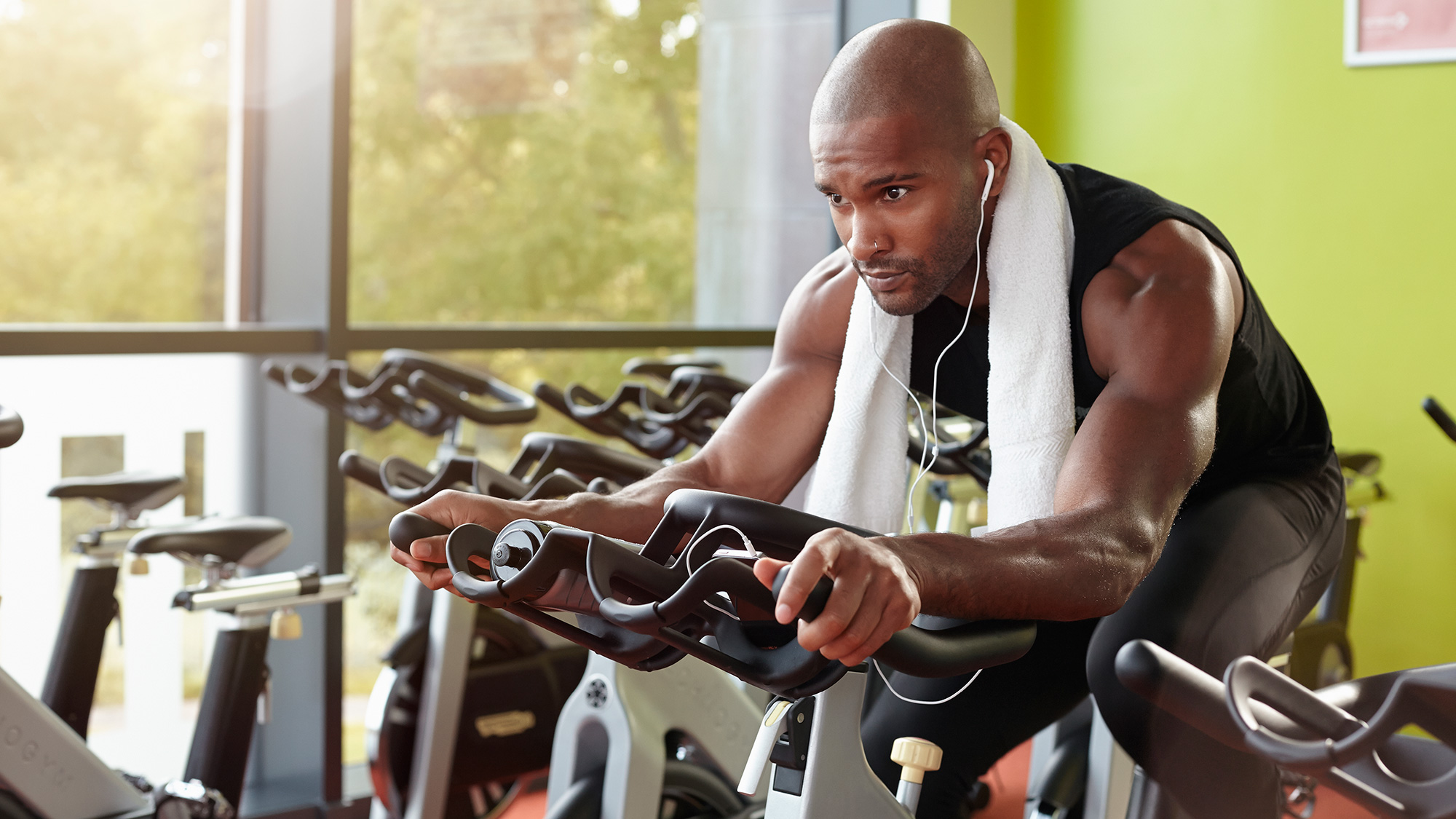
A cardio machine that lets you sit down whilst you use it? We're sold!
Of course, in reality a session on the exercise bike is no walk (or ride) in the park. Whether you jump on the stationary bike in the gym, join a spinning class or use one of the best exercise bikes at home, the benefits will include several muscles getting a workout (including the glutes, quads, hamstrings, triceps, biceps and core) and - once again - killer calorie burn.
Check out our top tips for beginners below, and take a look at our article on how to use an exercise bike for more detailed info.
Set up properly
Make sure the saddle is level with your hips so your legs can extend fully in the pedals (without being overstretched). If in doubt, ask an instructor or see our guide on how to use an exercise bike.
Start easy
If you’re new to the bike, start on a low resistance (one of the lowest number settings on the digital display) – but shift it up a gear when it gets too easy.
Keep your chin up
Yes, Tour de France racers lean low over the bars but, in general, a solid, upright posture, with your head up and a strong core, will make it much easier to breathe properly, and will prevent back injuries. It's also much harder, so you'll feel the burn more!
Watch the RPM
That’s revolutions per minute, shown on the screen on the bike. For a good workout, keep between 70 and 90 RPM. If you can’t manage it, your resistance settings are too high – if you’re going over, you need to make it harder by putting the resistance up. It’s best to vary your resistance settings during your workout, as this will make it more challenging for your muscles – and more interesting.
Go high speed
Try going all out, as fast as you can, at the highest resistance you can manage for 30 seconds, then rest for a minute. Repeat several times or until you feel tired. If you have a heart rate monitor, it can help with interval training by showing exactly when you’re working at the highest intensity.
Launched in 2020, Fit&Well.com is all about helping you meet your health and fitness goals in ways that are fun and achievable. With news and features on fitness, weight loss, running, nutrition, yoga, wellness and more, we're committed to helping you wherever you are on your fitness journey. We break down the best fitness tech, with reviews, buying guides and the latest deals on fitness and wellness kit, from dumbbells to diffusers.
We cater for all difficulty levels here. It doesn't matter if you're a beginner in the world of fitness or you're gearing up for your tenth marathon: we're all moving towards the same goal – creating a healthier, happier you. From guides on getting started doing walks around the block, to creating the perfect work-from-home space, to eating to fuel your first triathlon. It's all here.
-
 I do these two things every day to stay fit and healthy, says the newest star trainer on Chris Hemsworth's fitness app
I do these two things every day to stay fit and healthy, says the newest star trainer on Chris Hemsworth's fitness appHere's how Centr's Korey Rowe trains for longevity
By Sam Rider Published
-
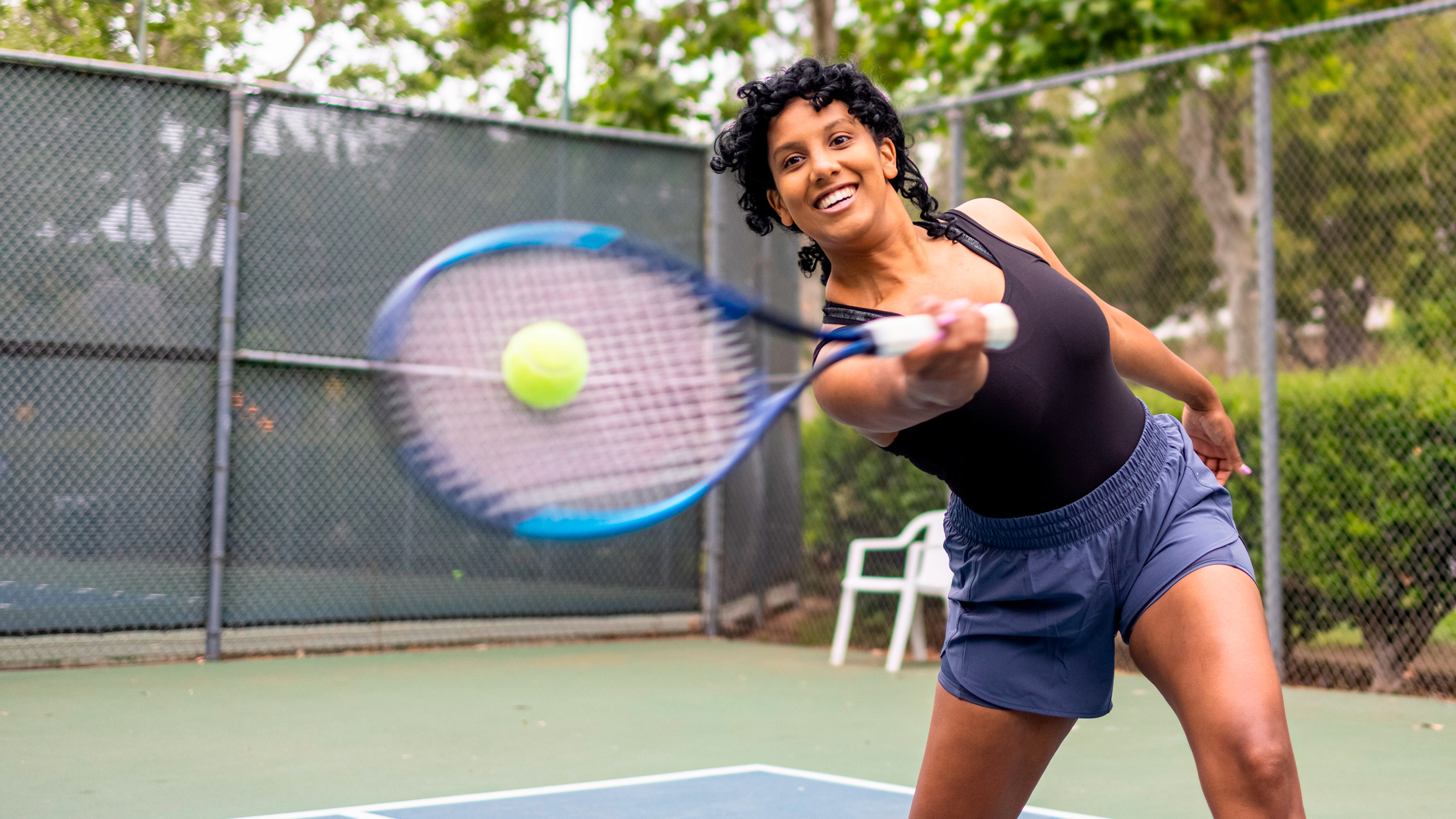 I thought sports weren't for me, until I realised they're a game-changer for ticking off cardio
I thought sports weren't for me, until I realised they're a game-changer for ticking off cardioI swapped HIIT and running for tennis—and I've never felt better
By Alice Porter Published
